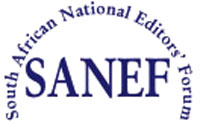This call is triggered by research presented to members at an AGM a few years ago that revealed that only 17% of views, images, and stories in the media in 12 Southern African countries reflected the voices and opinions of women, showing that an important section of news was missing from the media's representation of issues and stories in society.
Great strides have been made by several newsrooms but overall those with a properly consulted gender and employment equity plan as well as identified career paths for women, were the ones that were most likely to have made progress in redressing the imbalances and skewed nature of news and newsrooms.
Gender division
There are still examples of low numbers of Black women and of women in general in top management. There are different working 'deals' for men and women (pay packet differences) and gender division in some 'beats'; (although women reporters are now making their presence felt in fields such as sport and business). Sexual harassment and occasional archaic attitudes influence newsroom practice e.g, "We expect women to be home at 6pm cooking and not at press conferences mingling with ministers."
SANEF therefore calls on news leaders to ensure they have clear employment and editorial policies, with clear targets and guidelines for achieving gender diversity in media houses and in editorial content, as it believes they are not just elements of good practice, but are key elements of good governance within the media and of the media's accountability to the public.
Its deputy chairperson, Mary Papayya said, "Given the media freedom challenges we are currently facing it is more critical now than ever before that gender parity in our newsrooms and the voices of women in our media products remains a key priority. The role women play in the newsroom is an important one. How women's voices and their challenges are portrayed in print, radio and on television remains crucial. Such coverage shape society's attitude about women and their role in a democratic SA."


























